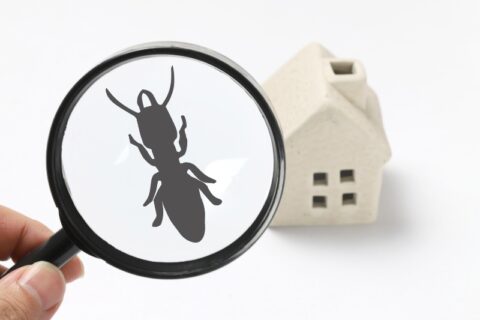The Importance of Annual Termite Inspections
You may have heard that termites cause billions of dollars of damage to homes and businesses each year. Maybe you had a termite inspection when you purchased your house, but now some time has passed since that initial visit from the termite inspector. If you haven’t seen any evidence of termites around your home, you can skip the annual inspection, right? Wrong! Often, termite infestations go unnoticed for months or even years, long enough for a termite colony to do major damage to a house. By the time you notice that termites are on the premises, your home may have already sustained thousands of dollars of damage, and most of the time, this damage isn’t covered by insurance.
One reason that termites are such a problem is that they live out of sight. Subterranean termites live underground, building huge colonies, sometimes numbering in the hundreds of thousands, in the loose, moist dirt. When they venture above ground, they do so in mud tunnels made of dirt mixed with their feces and saliva. Another common species of termite is the drywood termite. These termites live in whatever wooden structure they’re eating, so they can be found in walls and furniture. This type of termite can go undetected until their tunnels show through the walls or cracks appear in the wood.
Termites can travel more than 100 yards from their colonies, so if someone in your neighborhood has termites, you may have them too. If termites have caused enough damage to your home for it to be obvious, you’ll notice signs that include:
- Sagging ceilings and floors
- Piles of insect carcasses and wings
- The appearance of water damage in various places around your home
- Mud tubes on the foundation of the house
- A musty smell, like that of mold or mildew
- New or worsening asthma resulting from termite excrement
You might also see the termites themselves. There are different species of termites, but they all share a similar, distinctive look. They all have a head with two antennae and six legs, two of which protrude from the thorax, with the other four coming from the abdomen. They are somewhat similar to ants, but ants have very distinctly segmented bodies, while a termite’s thorax and abdomen look like one part. Additionally, termite antennae are straight, while the antennae on ants are bent like elbows. Termites have a very complex social structure, and the different social classes of termites look different from each other.
- The queen is usually out of sight, hidden away, producing more termites. If you were to see her, though, you’d notice that her abdomen is much larger than the abdomens of other termites. Her abdomen is also pale, with dark brown lines on it.
- You’re most likely to catch a glimpse of worker termites. These termites are responsible for foraging for food, and of course, that means they’re the ones who will eat through the wood in your home if given a chance. They are pale, slimy, and virtually featureless and look almost like large maggots.
- Soldier termites are typically only seen when their nest is disturbed. They have large, dark yellow heads and dark brown pincers that look almost like those of an earwig.
- Another type of termite you’re likely to see is the swarmer. Swarmers have large white wings and bodies that are black or dark brown. They’ll swarm on outside walls and windowsills, looking for a new home and a mate. Once they find those, they discard their wings and settle in to produce a large colony that will feast on the house they’ve chosen. You might see a few wings around a windowsill, but if you see a large swarm, the termite infestation is probably already full-blown.
Of course, the way to avoid seeing anything at all is to have a termite inspection once a year. When you call in a professional termite inspector, you’ll get a comprehensive inspection of your home, from the attic to the crawlspace, both interior, and exterior. The inspector will discuss the history of your property with you, collecting important details about the house before performing a high-quality inspection. Professional inspectors know how termites behave and where to look for them, so even if you haven’t noticed any signs of a termite infestation, the inspector will find any termites hiding in your home. After the inspection, you’ll receive a comprehensive report on what the inspector found with everything you need to know, including information about existing damage, any active infestation, and the recommendations for eliminating the termites and preventing reinfestation. In addition to an annual inspection, you need a company that will eliminate any existing termites and is proactive with the maintenance to prevent them from coming back.
At MightyMite Termite Services, we perform termite inspections to ensure that your home is free of termites. We also work hard to help you keep your home safe from termites, use naturally derived treatments, and have a low impact on the environment. We diagnose and treat infestations with the most effective methods and unmatched warranties, solving your termite problems the first time, with an industry-best “no call-back rate.” Combined with our experience, technology, and highly trained professional staff, that makes us the leading extermination company in the Bay Area. We understand that your home is your most important investment, so we work hard to provide excellent service, utilizing best practices to solve our customers’ termite problems in Northern California. For more information, call us today at 408.335.7053, email Info@mightymitetermite.com, or contact us through our website.








